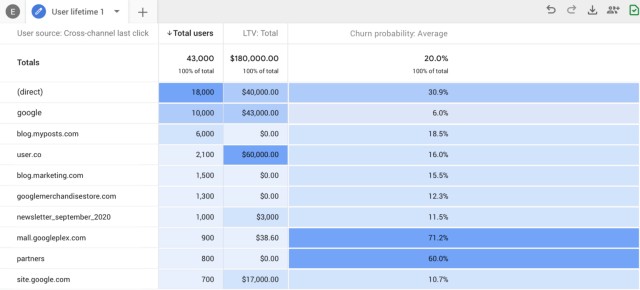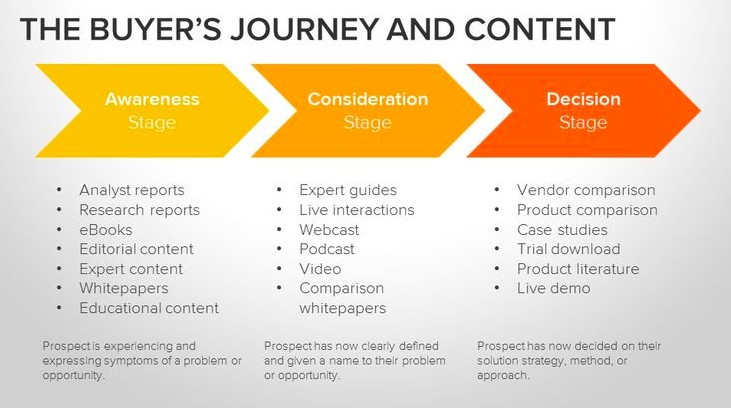With online marketing getting more and more competitive with each passing day, businesses are trying to get the best out of their marketing investment. In fact, a survey conducted by Forrester reveals that improving their use of analytics software is one of the top priorities for 84% of marketers. Despite this, only 43% are currently using cross-platform analytics tools because they think that existing analytics software makes it tough for businesses to extract actionable customer insights from large data sets.
That is where Google Analytics comes into play. Google Analytics is a free and powerful tool that helps webmasters to analyze their website traffic but it goes well beyond that. It not only helps you identify customer preferences but also assists you in designing a better experience for your customers.
Did you know how many websites use Google Analytics? More than 50 million. Yes, you read that right. That’s how popular Google Analytics actually is.

How Does Google Analytics Works?
Data can be represented as one of four different levels in Google Analytics.
- User-level
- Session level
- Pageview level
- Event level
User-level data defines action taken by users while session-level data shows each individual visit. As the name suggests, pageview data represent shows every page visited on your website. Lastly, event data cover things like clicks and views.
Types of Data
Data collected by Google Analytics can be broadly classified into two main categories.
- User Acquisition Data
- User Behavior Data
Simply put, user acquisition data is user data before the user visits your website and user behavior data is when or after the user visits your website. User Acquisition data includes age, gender, and interests while user behavior data includes time on site, page visited, etc.
Google Analytics Vs Google Analytics 4: A Comparison
Google Analytics has been around for quite some time now. One and a half decades to be exact. Launched on 14 November 2005 after Google’s acquisition of Urchin software, it has evolved drastically over the years. Fast forward to today and Google has recently announced its fourth iteration known as Google Analytics.
What new features does Google Analytics 4 bring to the table? Let’s find out.
- Smarter Insights for better decision making
- Comprehensive understanding of customer interests
- Better control over data and users
- Customer lifecycle reporting capabilities
- Codeless event tracking
In this article, you will learn about five new features of Google Analytics 4 that will help you increase your conversion rate.
1. Leverage AI-Powered insights
Google does not shy away from introducing new features and incorporating new technologies into its products. Google Analytics Insights was already taking advantage of machine learning but the new version of Google Analytics took it up a notch by adding artificial intelligence into the mix.

With Google Analytics 4, marketers can automatically receive an alert notification telling them about an uptick in the demand for a particular product. Moreover, it can also predict the churn rate and also tell marketers how much money they can earn from a particular market segment. All this data allows marketers to take the right decision at the right time. Due to this, marketers can anticipate, prepare and react to the actions customers might take in a much better way.
2. Customer Lifecycle Reporting Capabilities
What makes Google Analytics 4 stand out from its competitors and even its predecessor is its greater focus on the customer lifecycle. Property in Google Analytics 4 offers a comprehensive cross-channel view of the customer lifecycle. This enables marketers not only to act but also outline the ways they can use to target different customers in different stages of the buyer’s journey.
Russell Ketchum, Group Product Manager at Google Analytics. He said, “We have reorganized all of the reports that had been in the App + Web beta, added a handful of additions, and now it’s organized around the customer lifecycle.”

Google Analytics 4 enables marketers to understand different facets of the buyer’s journey. You can understand the actions the customer takes and why they take that particular action. Additionally, the new version also comes with features that provide businesses with better visibility into how customers are engaging with businesses across channels and devices.
By promoting the right offers to the right prospects, you can push prospects forward into the funnel and eventually convert them into paying customers. The more you know what your prospects are looking for at a particular stage, the better you can target them.
3. Real-Time Tracking
With users demanding real-time solutions to their problems, businesses must have real-time tracking capabilities to address customer pain points. That is exactly what Google Analytics 4 offers with its codeless event tracking. With codeless event tracking, marketers can not only track and measure website and app data without setting up Google Tag Manager. Let’s say, your visitors bounce off your website due to an irritating pop-up, you can remove it to improve the user experience.
By understanding how users interact with your website, you can personalize and tailor their user experience. When a user gets a personalized experience, it sends a clear message to them that your business cares about their likes and dislikes. On the other hand, it increases your conversions and decreases the bounce rate of your website.
4. Identifying User intent
Online marketers are already struggling in generating leads and converting those leads into paying customers despite having cookies at their disposal. With cookies going out of the window, how will digital marketers continue to thrive? Yes, we might have to face data sparsity and Google will use its algorithms to fill in those gaps.
This focus will slowly but surely shift from user analysis towards user behavior and user intent. If your goal is to increase conversion rate, you should be tracking heatmaps and metrics which reflect user intent and behavior. You can even segment your target audience based on user intent to effectively target them. This allows marketers to tailor their marketing campaigns according to user intent. As a result, these marketing campaigns deliver much better results when it comes to ROI.
5. User Consent Management
Gone are the days when digital marketers are free to collect, use and distribute customer data. With an added push towards data privacy and regulations like GDPR and CCPA, complying with these regulations is no longer an option. Google Analytics 4 brings a consent model that allows you to seek consent from your website visitors when collecting their data.
An effective social media marketing or digital strategy can even create separate opt-ins to ask for user consent both for analytics and ads. That was not possible with the previous version of Google analytics. Google Analytics 4 also comes preloaded with data deletion capabilities, allowing businesses to manage data deletion requests from users more efficiently. There is also a preview mode that allows businesses to verify data before deleting it so the wrong data won’t get deleted.
Granular level data control in Google Analytics 4 can also streamline data collection, management, and retention processes. Additionally, it also tells you when is the right time to use the data to optimize ads and when to cut back and limit your data use for measurement.
Which is your favorite feature of Google Analytics 4 and why? Let us know in the comments section below.
Author – Irfan Ak is an experienced digital content marketer. Irfan loves to contribute informative content using his knowledge, research & trends to readers and authoritative publications. Connect with him via LinkedIn or Twitter.
